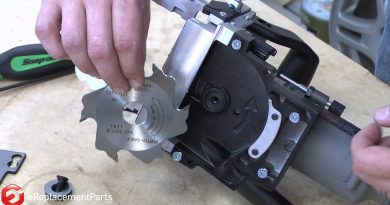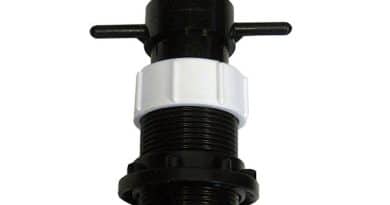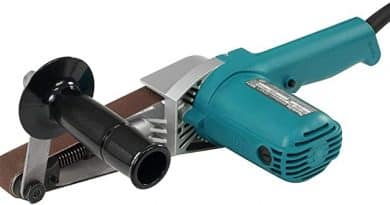Woodturning: How to Use a Faceplate Safely
Woodturners tend to split the craft into two categories, spindle turning and faceplate turning. This refers to the orientation of the grain of the wood concerning the bed of the lathe. The spindle grain runs parallel to the bed of the lathe and the faceplate grain runs perpendicular.
This can vary but it is a good rule of thumb. Even more helpful is to realize that most bowls are turned faceplate style while narrow chair rungs or table legs are spindles. Bowls are often turned from large pieces of wood, are only held on one end, and can be dangerous because of their size. It only makes sense for us to turn them safely.
Faceplates appear to be as old as wood lathes and are simple in design. A metal disk of a given diameter has a central nut or sleeve that has a thread the same size as that of the headstock of the lathe. The nut may be welded to the disk or they may be cast or otherwise made of one piece of metal.
When looking for a faceplate ensure that the thread size is correct and that the nut is sized to the headstock. Various lathes will have various lengths of thread available for the faceplate nut and a faceplate should have a long enough threaded sleeve that the end of the sleeve tightens against the screw of the headstock. This is what gives strength to the faceplate mounting on the lathe. If the sleeve is too short washers will be needed to provide a solid fit.
Bowls are often started from green wood and solid screws are needed to hole the wood into the faceplate. Broken or loose screws may allow the wood to become airborne or to be damaged against the tool rest or other parts of the lathe. Drywall screws are often used because they drive quickly with electric drill drivers without needing pilot holes. However, they are narrow, brittle, and designed for going through drywall and into kiln-dried softwood.
They are not safe for woodturning. Regular wood screws are a good compromise but even better are self-tapping sheet metal screws, preferably in a number fourteen size and in as long a length as is reasonable. They are very strong and have deep-cut threads for a superb hold. Use as many as there are holes in the faceplate. Some turners will tell you that only two are needed but with safety in mind, overkill can be vastly underrated.
Finally, make sure the faceplate is well seated on the piece before it is fastened. For a good join, the flat surface of the faceplate should be mounted to a flat surface on the wood. Take the time to make sure this happens. Use a sander or plane or whatever it takes, but make sure the surface is flat.
It will add a great deal of strength to the hold of the screws. To ensure an even better fit, note that screws often lift a bit of wood around them as the wedge action of the threads cut into the wood. Fasten down the plate, remove it and pare the lifted wood with a chisel and refasten the faceplate. It will be as strong a join as you can make and as safe as can be sought.
Woodturning is enjoyable for a great number of people and faceplate turning in particular. However, while it is one of the safest activities in the woodworking world, it is still undertaken on power tools with sharp implements while wood rotates rapidly in the turner’s direction. There is an element of danger in it that should be reduced as much as possible. Faceplates are carefully engineered to lend safety to the turning process as long as they are used properly. Not only is this easy, but also it encourages and maintains the delight of turning wood.




